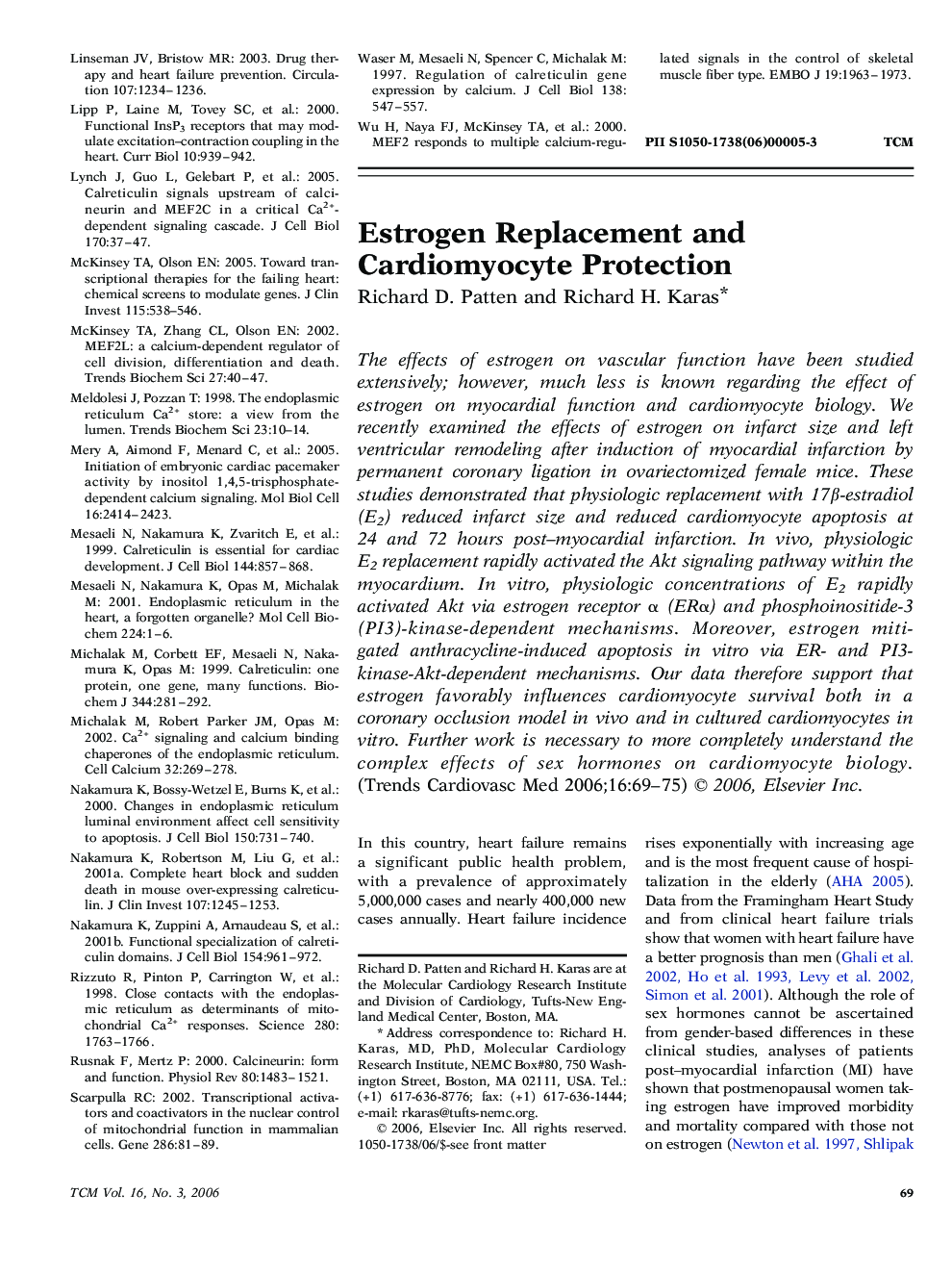| Article ID | Journal | Published Year | Pages | File Type |
|---|---|---|---|---|
| 3030768 | Trends in Cardiovascular Medicine | 2006 | 7 Pages |
The effects of estrogen on vascular function have been studied extensively; however, much less is known regarding the effect of estrogen on myocardial function and cardiomyocyte biology. We recently examined the effects of estrogen on infarct size and left ventricular remodeling after induction of myocardial infarction by permanent coronary ligation in ovariectomized female mice. These studies demonstrated that physiologic replacement with 17β-estradiol (E2) reduced infarct size and reduced cardiomyocyte apoptosis at 24 and 72 hours post–myocardial infarction. In vivo, physiologic E2 replacement rapidly activated the Akt signaling pathway within the myocardium. In vitro, physiologic concentrations of E2 rapidly activated Akt via estrogen receptor α (ERα) and phosphoinositide-3 (PI3)-kinase-dependent mechanisms. Moreover, estrogen mitigated anthracycline-induced apoptosis in vitro via ER- and PI3-kinase-Akt-dependent mechanisms. Our data therefore support that estrogen favorably influences cardiomyocyte survival both in a coronary occlusion model in vivo and in cultured cardiomyocytes in vitro. Further work is necessary to more completely understand the complex effects of sex hormones on cardiomyocyte biology.
